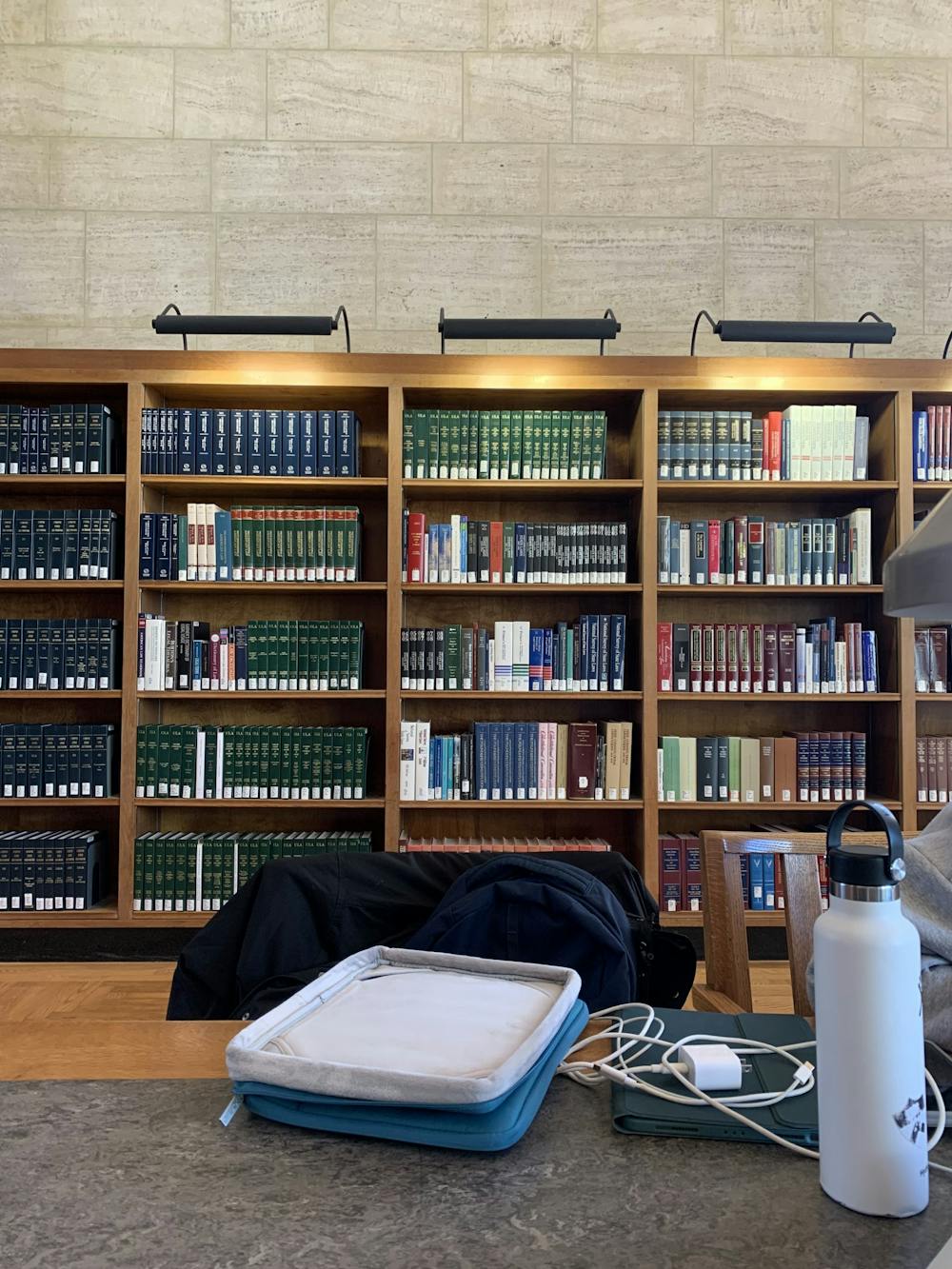Boldly declaring the name of every Princeton entryway in bumpy, domino-esque letters, braille goes largely unnoticed. These dots have no meaning to the untrained eye, or hand for that matter. For all we know, a classroom plaque in Frick Atrium written in braille could have stereochemical results or may simply state “Free tacos.”
Outside of the classroom, braille has shown up in diverse places: McDonald’s menus, embossed on the outside of L’Occitane perfume boxes, in the mouths of love poets who sing of poems written in braille (for love is blind), and most peculiarly, the Princeton Braillists group, which produces tactile maps. Such interesting places and interesting collections are matched only by the assortment of library books written in braille available to the Princeton community: “The Very Hungry Caterpillar,” “The Merchant of Venice,” and the U.S. Social Security Administration’s “Benefits for Children With Disabilities.”
What story does braille itself tell? From the words of librarians and the Office of Disability Services (ODS), an expensive one. According to Liz Erickson, the Director for ODS, “any one book can cost thousands of dollars to produce in braille,” and that’s simplifying the production process.
On an on-demand process, any student can ask for resources to be printed in braille; however, going through official channels, students with disabilities are required to register for accommodations with ODS and provide a digital file of the required materials. Then commences the weeks-long process of communicating with different professors to gain access to course materials, scanning existing library texts and running them through an OCR computer software to digitize these resources, and then further outsourcing these materials, often math-based materials, to two different vendors for printing.
When it comes to translation to braille, Peter Bae, the Assistant University Librarian for Scholarly Collection Access, laments the scourge of underlining in library books. “As the rule of thumb, we librarians don’t like people underlining. If they do do it, we hope they do it in pencil,” he explained. Seemingly innocuous lines written in pen and unerasable pencil marks render a book inaccessible. Without the capacity to scan these books, sourcing and purchasing these materials becomes all the more time-consuming and expensive. Without braille texts — even with aid and technology — materials with graphs, mathematics, and tables become almost illegible to the visually impaired.
The silver lining? After everything is said and done, Princeton will foot the cost for the translation, and students may keep said materials. Yet, despite an outwardly invisible presence on Princeton’s campus, the texts in braille themselves consume substantial space.
“A single page of text will expand to three to five pages of braille, or more if tables, images or graphs are involved,” said Erikson. “This means that a 300-page book could result in 1,500 pages of braille, also noting that the size of a braille page is typically 11.5 x 11 inches rather than a standard print page of 8.5 x 11 inches.”
Bae echoed this sentiment.
“Twenty regular volumes, when they came back to us in Braille, took an entire wall of stacks to shelve them,” he said.
To the relief of librarians allocating limited storage space, developing technology limits the need for braille books on hand. Text-to-speech software, which dictates resources, or BrailleNote, which is a specialized computer that has a braille or QWERTY keyboard, are attributed as the causes for decreased demand for braille.
Still, while Princeton may have a braille embosser on loan and Yale may have braille clickers, curiously, within the Ivy League, braille classes, braille labs, and adjacent spaces are still absent.
According to Erickson, the “appetite” for braille spaces — whether that be communities, classes, or other efforts — is unknown. While there are efforts to guide faculty to make course materials more accessible for students, the general consensus seems to be that because usage of braille is limited to a specific set of students, the visibility of braille is also limited. In other words, as has previously been the case with the currently-expanding American Sign Language program, braille spaces and braille labs will be unavailable until more students demand them. On Princeton’s campus, ironically, the presence of braille spaces and a community of learners are a far cry from visible.

But for now, students can do one thing to support the braille community: don’t be an annotating, desecrating philistine. Leave your library books mark-free — both for those who may need it and the librarians.
Macy Kwon is a contributing writer for The Prospect. She can be reached at mk8440@princeton.edu.








